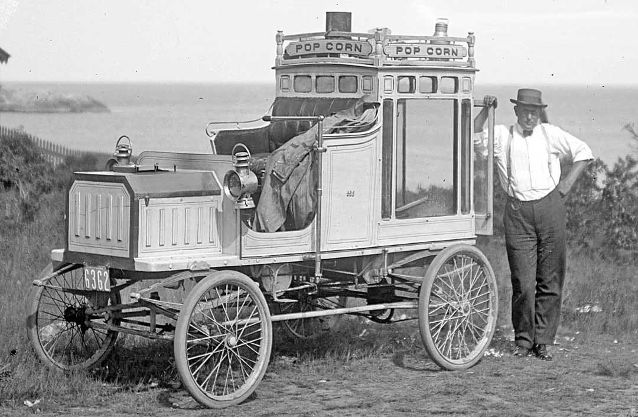Should employees be flying for business travel?
Short (haul) answer: No.
Choose fly drvn, the city-to-city ground alternative to the short haul flight.
Short Haul 101
“Two roads diverged in a wood and I – I took the one less travelled by.”
Robert Frost
- What are the best transportation alternatives for inter-city business travel?
- What is short haul transportation?
- What are the viable (health-safety, time, cost, etc.) transportation modes for inter-city travel?
- What should you consider when making travel decisions for yourself, your employees and your company?
In six short but interminable months, travel and transportation have gone through significant structural changes. The impetus of this change are the challenges imposed by COVID-19, but underlying this are corporate and cultural shifts that were already changing the manner in which teams and employees interact. One example that has been with us for a while is video-conferencing as an alternative to in-person meetings. With respect to travel, video-conferencing is still the only reasonable alternative to medium haul and long haul travel distances (over 500 miles) for business meetings. In this blog, you will learn about the advantages and disadvantages of three transportation modes available for traveling between destinations (intercity) separated by short haul distances. There are a number of applications for business short haul travel, which are beyond the scope of this blog. For more information please check out our short haul service, fly drvn.
In our years serving business travelers, travel planners and travel managers, we have found that business travel professionals choose a transportation mode for point-to-point service based upon a select number of preferred attributes or factors. The most frequent travel category with the most decision variables is intercity short haul travel. Specifically, those routes that are between 3 to 6 hours in door-to-door drive time or about 200 to 400 miles in distance. The terms ‘short haul’, ‘medium haul’ and ‘long haul’ refer to distance irrespective of mode. However the airline industry refers to those terms as categories of travel time, not distance. Our reference for these terms in all cases is distance not time.
Below a set of ‘preferred’ attributes that companies explicitly, or implicitly, use to evaluate transportation options. These key factors are the ones we, here at drvn, have found to be the most common considerations. A number of studies have also concluded that these are the main factors for mode choice that business travel decision makers use.
These attributes are:
-
Price - calculated as the lowest all-in cost where:
-
the air or rail price = ticket price + door-to-door ground transportation cost to and from an airport or rail station, and;
-
the ground price = the door-to-door total ride cost.
-
-
Travel Time - calculated as the door-to-door total time of travel.
-
Productivity - calculated as the percent of Travel Time available to focus on, and be unimpeded for, work.
-
Punctuality - the percentage of times a mode has on-time arrival (does not include on-time departures).
-
Reliability - service cancellations, flight delays, schedule changes and other consistency measures.
-
Convenience - this is a combination of subjective measures:
-
the ease of accessing airports (or rail stations) from a pickup point and to a dropoff point, and;
-
the ability to have team members travel together and productively interact or to have the space to work independently and productively.
-
-
Schedule - as measured by the number of daily departures, which is subjective based on passenger preferences.
-
Comfort - roominess, seat comfort, food choices, and other subjective ‘feel-good’ amenities.
-
Luggage - relative limits, handling considerations, baggage fees and other baggage constraints. This is also a subjective measure based on passenger preferences and level of importance.
With the COVID-19 pandemic we must also add a 10th factor, health-safety. Though this is somewhat anecdotal as health-safety measures vary by individual providers in each mode. Nonetheless, this still has become a visible measure of the safety measures taken by providers to prevent the spread of disease as well as each mode’s limitations in their ability to provide measures.
For you as a travel decision maker, it is very likely that health-safety is now the most important factor you consider for choosing modes of travel. Whether health-safety as a criteria is temporary, or represents a fundamental social and policy shift, remains to be seen. Given conversations with travel managers, administrators and planners, airlines, and other travel professionals, it is our guess that health-safety will remain a significant priority for the foreseeable future. Clearly today, it is a strong consideration and ranks at, or near, the top of the list of priority attributes. Accordingly, we have included it in how we rank the different modes of short haul transportation.
In evaluating these attributes, it is wise to include broad but specific demographic reference groups as a perspective for assigning value. The primary demographic drivers for business travel are age and profession:
-
A typical business traveler is likely to be 30 to 49 years old where 53% of all business trips are made by individuals (58% men and 42% women) in that age group.
-
Those who consider their occupation to be professional, managerial, or technical account for over half (55%) of all business trips.
Given these two key usage demographics, age and profession, which also happens to be the chauffeured service industry’s primary demographic, we first ranked the objective data; Price, Travel Time, Productivity and Reliability using the metrics as stated.
For the remaining 5 subjective measures, everyone will have an opinion, including you, as to relative value and importance. Regardless, we used objective criteria to look at each subjective measure.
-
For Convenience, an important measure is the number of intermodal changes (car to airport to tram to plane to car…). The greater number, the greater the inconvenience and greater the possibility for travel disruption.
-
With Schedule, we used the relative convenience of air and rail schedules against the ‘any-time’ schedule offered by ground.
-
Comfort, a very subjective measure, includes: space, proximity to other travelers, seating ergonomics, amenities offered and so forth.
-
Luggage also has a number of objective measures, baggage fees, lost baggage, baggage damage and ease of handling. However, on balance, it is moderately subjective and biased to passenger preference.
-
Health-Safety measures are now well known - limit touch points, avoid crowds, limit transfers. But as we have seen in the political divide there is no agreement on the science or the protocols and hence are subjective based on how passengers relate to the science and observe the protocols.
One final point you should be aware of is that ground transportation by private car is a door-to-door service with an all-in price. For air and rail, the factors of Price, Travel Time, and Productivity must be adjusted to reflect the true door-to-door cost of travel. Now, onto the results.
A couple of interesting things our research has shown is that short haul air travel is often longer than rail or ground - the average short haul flight with door-to-door travel is 3 hours and 25 minutes. Travel Time almost doubles actual flight time when including door-to-door (point-to-point transfer) travel to and from the airport, airport check-in time, wait time at the airport, time waiting for baggage and so on. That doubling becomes tripling if you factor in a layover when it is not a non-stop flight.
Another interesting observation is that even with travel costs added to and from a station, rail is less expensive than both ground and air. But not surprisingly, it also has the lowest Health-Safety rank and, with fewer route options, ranks lower in convenience.
What is clear from the above data is that ground is a far better choice for business travel than air or rail for routes between 2 and 5 hours.
Key considerations of productivity and health-safety make ground transportation far and away a better choice than either air or rail. It is only Price where rail is a better value than ground.
Lastly, there is one additional attribute we did not use in this analysis, but it is a factor that more and more companies are taking seriously - climate change and the carbon footprint per passenger for taking flights. We did not include it as a metric for this analysis as its level of importance is not evenly distributed across businesses. We at drvn expect that to continue to change over time as carbon policy will likely move towards impacting businesses economically. Nonetheless, it is still worth mentioning that per passenger air travel emits 133 grams of CO2 per hour of flight time (roughly the short haul distance). Rail emits 41 grams of CO2 over that average short haul distance and an SUV with 4 passengers emits about 48 grams of CO2. Rail, the winner here, followed closely by Ground.
Short haul travel has become drvn’s go-to service for corporate clients looking to manage small teams traveling under 5 hours. Today with COVID, we have seen a significant uptick in reservations for even longer distances. At drvn, we offer chauffeured services and applications, to businesses or consumers, as a solution for a range of short haul intercity route challenges. We invite you to come explore our short haul solutions, using the fly drvn air vs ground real time price-by-route comparisons on drvn’s short haul services page.
“When you come to a fork in the road, take it.”
Yogi Berra




